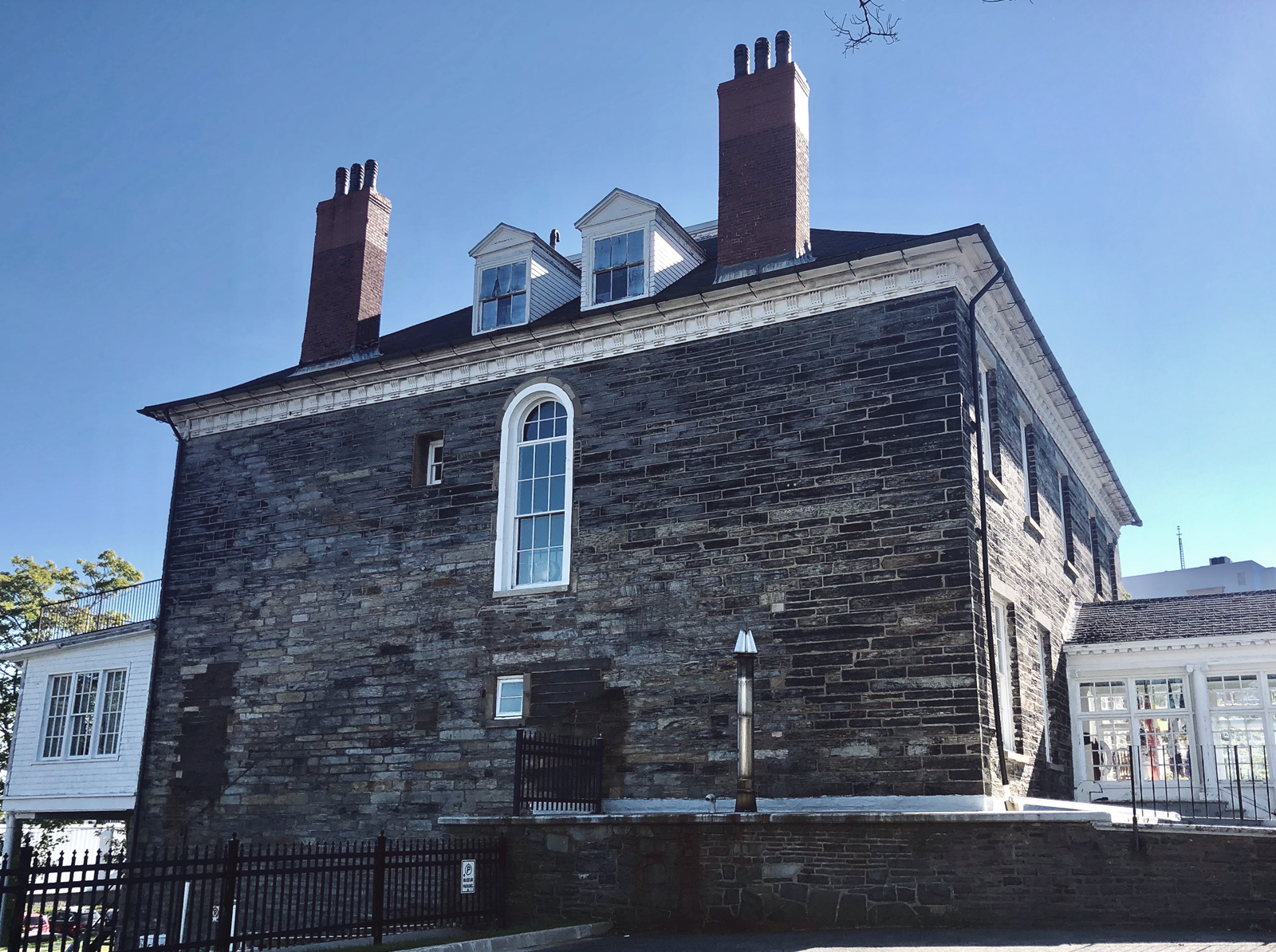Ghosts at the Halifax Naval Museum
By Lookout on Oct 27, 2021 with Comments 0
Museum staff share stories about the spirits of Admiralty House
Joanie Veitch
Trident Newspaper
––
The lady with the long white hair on or near the main stairs is the most common sighting reported to Naval Museum of Halifax staff. They’ve also had reports of people hearing water running, and another from someone who heard the clang of a metal bucket.
Even without visitors in the building, the museum is never silent. More than 200 years old, Admiralty House creaks and groans from time to time — as old buildings do — making it easy to imagine how a small noise or sudden movement could play on the mind.
Could it be a ghost?
“We’ve heard lots and lots of ghost stories,” says Lisa McNiven, archivist at the museum.
Sightings of a lady with white hair and the sound of water running are most likely connected to the story of Mary Gray, a servant who worked at Admiralty House in the mid-1800s, McNiven says.
“The story that has been passed down is that late at night the lady of the house called for water. Mary was either the lady’s maid or some other house servant and she went upstairs to deliver the water — it would have been in a bucket — and she fell down the stairs on her way back.”
Mary Gray died that night in 1858, and although the inscription on her grave has eroded, museum staff say her gravestone is in the old cemetery, the Royal Naval Burying Ground, tucked away at the lower part of the base.
Before COVID-19 safety precautions closed the museum to the public, a medium who visited the Naval Museum of Halifax as part of a paranormal investigation team estimated there were as many as 14 spirits in the house.
“Pre-COVID we had a daycare visiting and one little guy, he would have been about four years old, asked why the lady in the mirror wasn’t talking to him,” McNiven recalls, gesturing to a mirror in the front room. “He said she had long white hair and she was leaning out of the mirror and looking at him, but she wasn’t saying anything.”
Jennifer Denty, museum director, has heard the stories too. She’s never personally experienced anything more than a noise that turned out to be a loose gutter, but reports of hearing or seeing “something” are persistent, coming from past and present museum staff and volunteers, commissionaires and visitors.
“Before COVID we used to do events in the evenings, so if someone was here late at night closing up, that was when things would get reported,” she says. “It can get a little creepy, I’ll admit.”
Construction of Admiralty House began in 1815 and continued through to 1819. The grand three-storey house served as the British Admiral’s summer residence at what was then known as the Royal Navy’s North American Station from 1819 until 1904.
While the Admiralty spent winters in the more temperate climate of Bermuda, the house was not empty. Over the years various workers, and sometimes their families, would spend the winter months looking after the house.
One such family was the Lows, a husband and wife who lost four of their children in less than a week in late December 1884.
According to McNiven, who has researched the family’s story, the father was the gardener and had been hired to keep the coal running in the winter. Six-year-old William died on Christmas Day, followed by Alice, aged four, on Dec. 28, and three-year-old Samuel the following day. The youngest, Albert, died on Dec. 31 at just 18 months of age.
“We don’t know for sure what they died of but cholera was running through the Dockyard at that time, so we assume that was what happened,” says McNiven. “That poor woman losing her children, I believe that kind of trauma lingers on. It has to.”
Another incident involving a mother and child took place during the Halifax Explosion. “The mother was up in the attic holding her baby and looking out one of the top windows,” says McNiven. “She was likely looking down toward the harbour to see what all the commotion was about when the explosion happened and the window blew in. Both she and the baby were killed.”
Working alone in the house one day, McNiven said she distinctly heard a door slam upstairs in the attic. It was loud and the noise reverberated down to where she was working on the second floor. She stopped to listen but it didn’t happen again.
“There are no doors in the attic. There are different rooms with doorways but no doors.”
Other reports include a young cadet who said she saw a man down on the lower level wearing an “old-time” suit. Like the young boy who saw the woman in the mirror, the cadet asked why the man wouldn’t come out and talk.
“Children seem to see the spectres, or whatever they are,” says Denty. “They’ll talk as though it’s a real person they saw when there was no one there that anyone else saw.”
Then there’s the crypt. Formerly a cold storage area in the basement of the house. It has twice acted as a morgue, first in the mid to late 1800s when a magazine exploded and killed a number of people, and again following the Halifax Explosion.
“People have said they heard voices down there, I’ve never heard anything but who knows?” says McNiven.
Although the museum remains closed to the general public at present, it is open to anyone who works on the base. Museum staff say they would be happy to arrange a tour and talk about the various ghost stories of the house, or any other historical subject of interest.
For more information call 902-721-8250 or email: navalmuseumofhalifax@forces.gc.ca
––––
Filed Under: Top Stories
About the Author:






